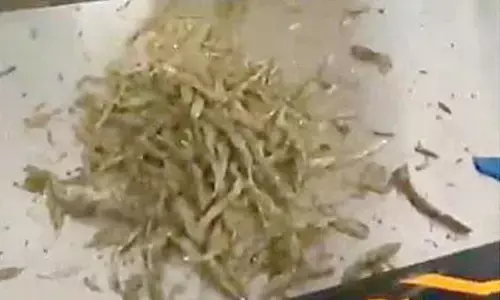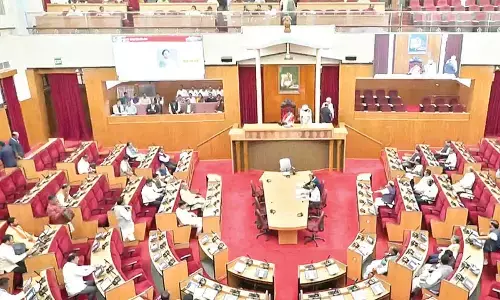Yamuna pollution: Delhi aims to treat entire sewage generated in city by Dec

Delhi aims to treat all sewage generated in the capital as per the prescribed standards by December which will help reduce the pollution load in the Yamuna river
New Delhi: Delhi aims to treat all sewage generated in the capital as per the prescribed standards by December which will help reduce the pollution load in the Yamuna river, the Delhi government's environment department has informed Lieutenant Governor V K Saxena.
At a meeting last week, officials informed the LG that the sewage treatment plants (STPs) in the capital will be able to treat around 814 million gallons of wastewater per day (MGD) by December. Saxena had called the meeting to take stock of the ground situation before the first meeting of a new high-level committee appointed by the National Green Tribunal for the cleaning of the Yamuna.
The green tribunal had requested the Delhi LG to head the committee. The environment department gave a presentation, informing the LG that Delhi generates 768 million gallons a day (MGD) of sewage. The 35 STPs in the capital have a cumulative treatment capacity of 632 MGD. At present, these STPs are utilising only 69 percent of their installed capacity, i.e. only 530 MGD of the 768 MGD sewage is being treated. The official said only 160.5 MGD of the treated wastewater meets the prescribed standards, i.e. BOD (biological oxygen demand) and TSS (total soluble solids) in the treated wastewater should be less than 10 milligram per litre.
BOD, an important parameter for assessing water quality, is the amount of oxygen required by aerobic microorganisms to decompose organic material present in a water body. BOD levels less than 3 milligram per litre is considered good. The officials said Delhi's sewage treatment capacity will increase to 727 MGD by June and 814 MGD by December this year. The treatment capacity will be further increased to 935 MGD by June, 2024 to accommodate the future increase in sewage generation. An official said that the upgradation of 18 existing STPs will increase the cumulative treatment capacity by 93.2 MGD and the rehabilitation of three existing STPs will add another 70 MGD.
The construction of three STPs in Okhla, Delhi Gate and Sonia Vihar will lead to an increase of 47 MGD in the treatment capacity and 40 decentralised sewage treatment plants will be able to treat another 92 MGD. Thus, the installed treatment capacity will increase from the existing 632 MGD to 934.5 MGD by June 2024, the official said. The 22-km stretch of the river between Wazirabad and Okhla in Delhi, which is less than two percent of the river length, accounts for around 80 per cent of its pollution load. Untapped wastewater from unauthorised colonies and slum clusters, and poor quality of treated wastewater discharged from sewage treatment plants (STPs) and common effluent treatment plants (CETPs) is the main reason behind high levels of pollution in the river. The Delhi government has promised to clean the Yamuna to bathing standards by February 2025.










